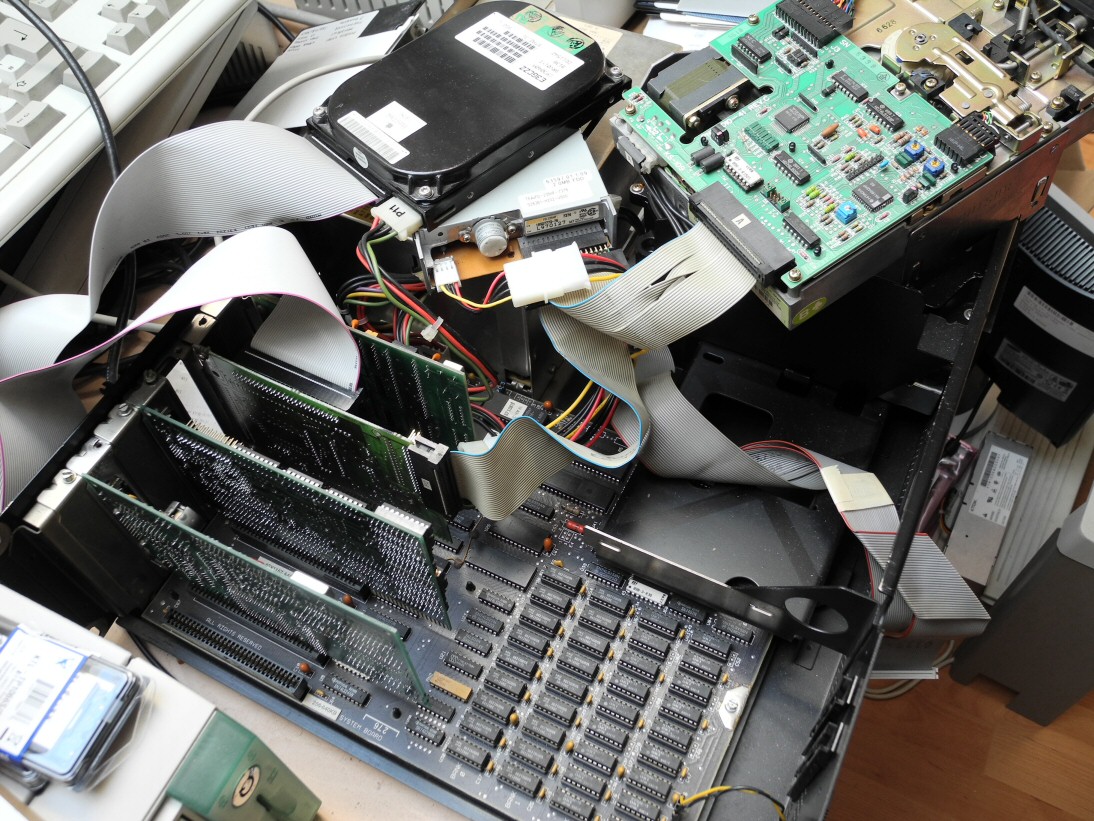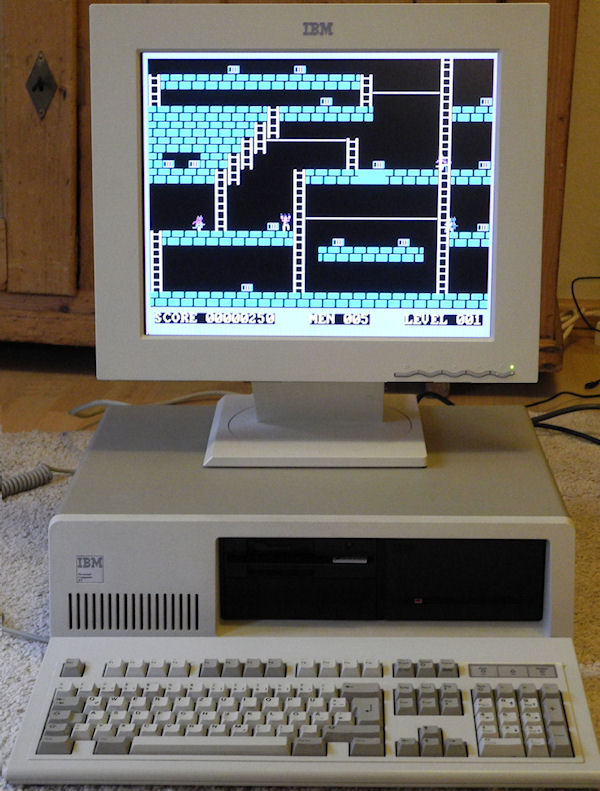|
Back
|
The IBM PC/XT was the father (or mother) of all PCs, and first selled in 1982.
The mainboard fully populated had 640KB RAM, far enough for MS-DOS applications of that time. But users of spreadsheet software like Lotus 1-2-3 or Microsofts Multiplan began to be more and more memory-hungry, so EMS (Expanded Memory) was invented. EMS cards were popular until IBM build their next Personal Computer, the well known IBM PC/AT, which made Expanded Memory unnecessary.
Like the Apple II, the IBM PC and PC/XT has a similar concept for "expansion cards" with many different functions (I/O cards, Controller, graphics cards, memory cards a.s.o.). The bus system was called ISA (Industrial Standard Architecture), and hat an 8-Bit data bus. It's difficult to get VGA cards for an 8-Bit ISA BUS, because at this time, 16-Bit ISA BUS (starting with the IBM PC/AT) was already present.

Some 16-Bit ISA BUS VGA cards are still compatible with the ISA 8-Bit BUS, only a switch must be changed (e.g. Diamond ET 4000). This card was also used here.
To use a larger hard drive (not the original 10MByte, or later 20MByte), you can take a SCSI adapter, 8-Bit ISA Bus controller like the Seagate ST-01/02 or the Trantor T130 would be a working choice. Also, it's possible to work with 3.5" drives, at least using 720KB (DD, not HD) floppy disks (a 1.44MByte drive works as a 720KB drive if High Density Signal is missing).
With that VGA card, it's possible to use a (almost) modern TFT screen:

<This page is not finished yet.>
|









